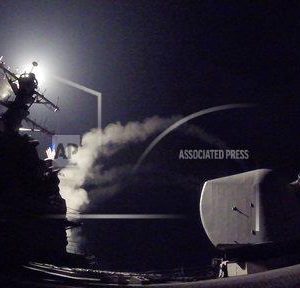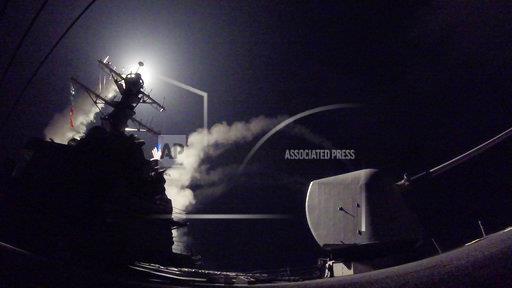
DUBAI, United Arab Emirates (AP) — A communication link between U.S. and Russian military officials has protected pilots flying missions over the crowded skies of war-ravaged Syria, but now Moscow says it is suspending its cooperation over an American missile strike.
The following is an explanation of the so-called “deconfliction line” and the possible consequences of cutting it.
___
FLYING THE UNFRIENDLY SKIES
A U.S.-led coalition has been bombing Islamic State-held territory across Syria, launching 24 strikes on Thursday alone, according to the U.S. military’s Central Command. The coalition includes some 60 countries, with some launching their own strikes into Syria. Russia is waging its own bombing campaign in support of President Bashar Assad’s forces, while the Syrian government has its own air force and air defense systems. That means a lot of aircraft are flying in a small airspace, which raises the danger for pilots. In November 2015, for instance, NATO member Turkey shot down a Russian jet fighter, nearly sparking an international conflagration.
___
WATCHING THE WAR FROM QATAR
To protect pilots, Moscow and Washington opened a so-called “deconfliction line” after Russia began its bombing campaign in September 2015. On the U.S. side, it is run out of the Combined Air and Space Operations Center at the vast al-Udeid Air Base in Qatar, which hosts the forward headquarters of U.S. Central Command. There, air traffic controllers and senior military officers are in contact with their Russian counterparts in Syria. They share coordinates and other data to avoid midair collisions or confrontations. One U.S. pilot flying missions over Syria credited his safety to it in a recent Associated Press interview .
___
MISSILE STRIKES AND NEW WARNINGS
On Thursday, U.S. President Donald Trump ordered a missile strike on the Shayrat air base, southeast of Homs, over a chemical weapons attack he blamed on Syria’s government. The U.S. used the “deconfliction line” to warn Russia ahead of time that the strike was coming. In the aftermath of the attack, which Syria said killed at least seven people, Russia announced it would suspend its cooperation in the information-sharing campaign, the first time the line has been severed. Russia still has several dozen warplanes and batteries of air defense missiles at its base near Latakia, Syria.
___
WHAT HAPPENS NEXT
Lt. Col. Michelle L. Baldanza, a Pentagon spokeswoman, said the U.S. military wants to continue to talk to Russia. “It is to the benefit of all parties operating in the air over Syria to avoid accidents and miscalculation, and we hope the Russian Ministry of Defense comes to this conclusion as well,” Baldanza said.
The U.S. maintains radar coverage and has other surveillance means to know who is in the air. However, ending the cooperation will mean U.S. and coalition pilots will be flying into Syrian airspace not knowing if Russian forces plan their own operations in the same places. Airwars, a nonprofit monitoring airstrikes in the war against the Islamic State group, noted that U.S.-led attacks typically focus on areas away from Russian activity, though ending the cooperation represents “a worrying development.”



